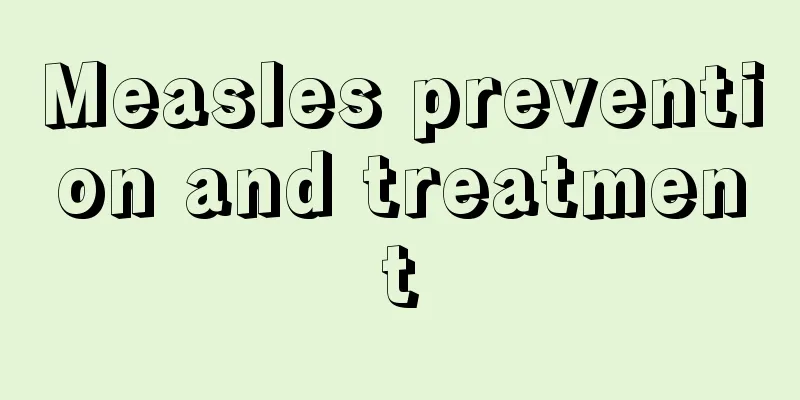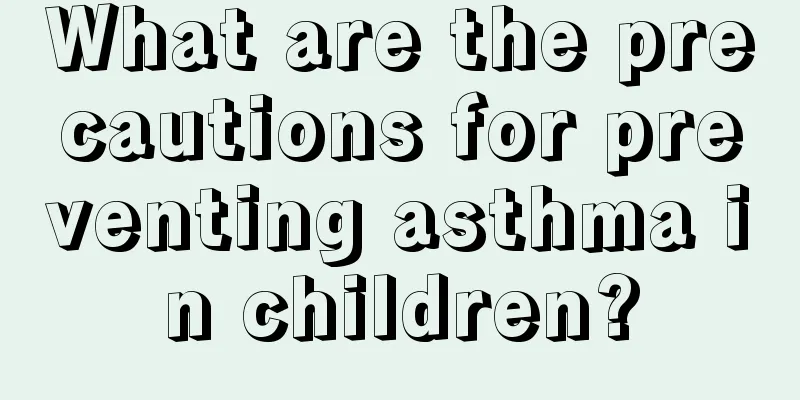Measles prevention and treatment

|
Measles is mainly caused by the measles virus. It is an infectious disease that affects the respiratory tract and skin of children and is generally transmitted through the respiratory tract. So what symptoms does it cause and how can we prevent the occurrence of measles? How to treat measles? Let’s take a look: Measles virus belongs to the Paramyxoviridae family. It is a spherical particle with a diameter of about 100-250nm and 6 structural proteins. During the prodromal and rash stages, measles virus can be isolated in nasal secretions, blood and urine. When cultured in human embryos or monkey kidney tissues for 5-10 days, the cells show pathological changes, including multinucleated giant cells with intranuclear eosinophilic inclusion bodies. Measles virus has only one serotype and is antigenically stable. The virus is not heat-resistant and is sensitive to sunlight and disinfectants, but can be preserved for a long time at low temperatures. Measles patients are the only source of infection. Children are contagious from 7 days after contact with measles to 5 days after the rash appears. The virus exists in secretions of the conjunctiva, nose, mouth, pharynx and trachea, and is transmitted by droplets through sneezing, coughing and talking. The disease is highly contagious, and more than 90% of susceptible people will develop the disease after exposure. In the past, it was prevalent in cities every 2 to 3 years, with the highest incidence in children aged 1 to 5 years. After the use of live attenuated measles vaccine, the incidence rate has decreased, but because the immunity is not long-lasting, the age of onset has been postponed. Currently, the disease is more common among preschool children who have not received vaccinations, teenagers and young people with immunization failure, and may even form an epidemic in the community. Infants can obtain maternal antibodies from the placenta and have passive immunity within 4-6 months after birth, which gradually disappears afterwards. Although the maternal antibodies in the blood of most infants are no longer detectable at 9 months, they may still persist in some children, even for up to 15 months, which will affect vaccination. Babies of susceptible mothers are not immune to measles and may become ill before or after birth. When a susceptible person inhales nasopharyngeal secretions or droplets containing the virus from a measles patient, the measles virus multiplies in the local mucosa for a short period of time, and a small amount of the virus invades the blood. Thereafter, the virus actively replicates in the mononuclear macrophage system of distant organs, and enters the blood in large quantities about 5 to 7 days after infection. This is the clinical prodromal period. During this period, the virus can be found in the child's systemic tissues such as respiratory epithelial cells and lymphoid tissues, and appears in secretions and body fluids such as nasopharyngeal secretions, urine and blood. It is most contagious at this time. After the rash appears, viral replication decreases, and by the 16th day after infection, only the virus can still persist in the urine for several days. On the second day after the rash appeared, the antibodies in the serum were almost 100% positive and the clinical symptoms began to improve significantly. Because the systemic and local immune responses are still suppressed at this time, some patients often develop secondary sinusitis, otitis media and bronchopneumonia. 10% of children have a significant increase in lymphocytes in their cerebrospinal fluid, and 50% have electroencephalogram changes at the peak of the disease, but only 0.1% have symptoms and signs of encephalitis, which often appear several days after the acute onset of the disease. At this time, the antibodies in the serum have increased and the virus can no longer be found, so it is considered to be autoimmune encephalitis. Subacute sclerosing panencephalitis, also known as Dawson encephalites. It occurs several years after contracting measles. The pathogenesis of measles encephalitis has been proposed to be viral mutation, special virulence of the virus strain, or a second viral infection promoting chronic measles encephalitis, but none of them can be confirmed. Recent studies have found that SSPE patients suffer from blocked translation during the synthesis of M protein (matrix) in brain cells. Since this protein is necessary for viral assembly, the lack of M protein causes incomplete measles viruses to aggregate, which cannot be cleared by antibodies or immune cells, thus leading to the disease. How to prevent measles? Changing the immunization strategy: my country's current measles immunization program for children is: a full course of immunization consisting of 3 injections, namely the first vaccination at 8 months, and revaccination 1 injection each at 1.5 years and 6 years old. However, experts have suggested adjusting the original procedures, such as revaccination of college students, middle school students and young people with measles vaccine; adding one more measles vaccination for women of childbearing age, which can increase the maternal measles antibody positivity rate from the general 21.43% to 90.91% after vaccination, thus reducing the incidence of measles in neonates. Disease prevention is the priority. We follow the measles vaccination procedures and get vaccinated step by step. I believe the chance of getting measles is low. Even if measles occurs, we should not panic. We should treat this disease correctly. It is caused by respiratory infection and will not be transmitted through the skin. We should open the windows in time to keep the indoor air fresh. In addition, we should improve children's immunity in daily life. I believe that the disease will stay away. |
<<: What to do if you have tricuspid regurgitation in a newborn
>>: Analysis of three situations in which babies like to stick out their tongues
Recommend
Causes and treatments of red tonsils
Children are more likely to have red tonsils in t...
Benefits of enema in children
As parents, we fear our children catching a cold ...
What are the nursing measures for premature babies born at 28 weeks?
What are the nursing measures for premature babie...
What should I pay attention to when my baby has megacolon?
The baby is the hope of every family and is worth...
Why does my baby always grind his teeth when sleeping?
Some babies often grind their teeth when they sle...
Perianal abscess in children
Perianal abscess is a disease that occurs frequen...
What to do if your child is allergic to cold air and coughs
If a child has an allergic cough due to cold air,...
Why is the baby's stool green?
We all know that due to different feeding methods...
Introduction to sinus arrhythmia in children
Children's health is an issue that mothers ar...
What should I do if my child has a urinary tract infection?
Many parents have reported that their babies have...
What causes anemia in children?
Generally, when children have anemia, parents do ...
What to do if your child has astigmatism
When children suffer from astigmatism, they often...
Why do children love to drink water?
Many mothers will find that their children have s...
5 reasons why children always lose their temper with their parents
It is common to see children yelling at their par...
What does it mean when a child's urine protein is three plus?
The urine protein test report may show three plus...









